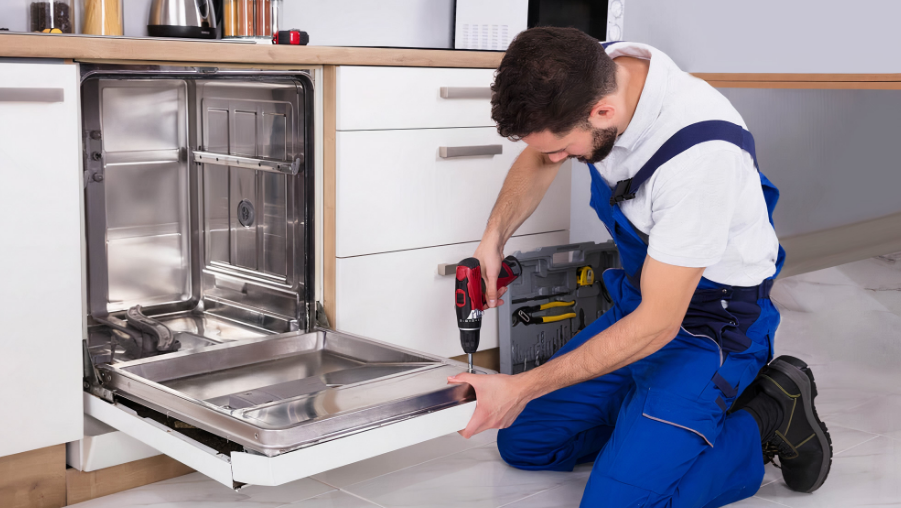Installing a range hood in your kitchen isn’t just about looks—it’s about keeping your air clean, your kitchen cool, and your cooking experience enjoyable. But the real magic happens when the range hood is vented correctly. Whether you’re replacing an old model or putting in a new one, proper venting is the key to making it work like it should.
In this guide, we’ll walk you through everything you need to know about how to vent a range hood properly during installation. From the types of venting to the common mistakes to avoid, you’ll leave this page confident and ready to make smart decisions—without needing to be a pro.
Why Proper Venting Matters
Before we dive into the “how,” let’s talk about the “why.” Your range hood is responsible for removing smoke, grease, steam, and odors that come from cooking. Without proper venting, all that grime can linger in your kitchen and even spread throughout your home.
Poorly vented hoods can lead to:
- Stuffy indoor air
- Sticky residue on cabinets and walls
- A harder-working HVAC system
- Safety risks from built-up grease
Whether you’re a DIYer or hiring a professional like an appliance repair specialist in The Villages, proper venting should be at the top of your priority list.
Step 1: Choose the Right Type of Range Hood
There are two types of range hoods you can install:
- Ducted (vented) – These push the air outside your home.
- Ductless (recirculating) – These filter the air and release it back into the kitchen.
For best results, a ducted range hood is the preferred choice. It removes air completely, instead of filtering and re-circulating it. If you’re cooking often or love fried foods, go ducted.
Step 2: Pick the Best Venting Route
Now that you’ve chosen a ducted hood, the next step is choosing where the air will go. The goal is a short, straight, and efficient path for the duct.
Here are your options:
- Out the wall (horizontal venting): Usually the shortest route. Ideal if your range is placed on an exterior wall.
- Through the ceiling and out the roof (vertical venting): Common in kitchens with islands or where the range is on an interior wall.
- Up and then out the side wall (combination): Sometimes used when vertical venting isn’t practical.
Tip: Always vent to the outdoors. Avoid venting into an attic, crawl space, or garage. It may seem easier, but it invites serious moisture and fire risks.
Step 3: Use the Right Duct Materials
Range hoods need strong, smooth ducts to work well. The wrong materials can reduce efficiency, increase noise, and become a fire hazard.
Best materials:
- Rigid galvanized steel
- Rigid stainless steel
- Rigid aluminum
Avoid flexible ducting unless absolutely necessary. Its ridges can trap grease and reduce airflow.
Also, check your range hood’s manual for specific duct size requirements. Common sizes are 6″, 7″, or 8″ diameter, but always follow the manufacturer’s recommendation.
Step 4: Install the Ductwork Properly
Here comes the hands-on part. Whether you’re doing it yourself or calling in an appliance repair specialist in The Villages, careful duct installation is a must.
Key tips for success:
- Keep it short and straight: The longer and more twisted the duct, the weaker the airflow.
- Use as few elbows as possible: Every bend adds resistance. Try to use no more than two 90-degree turns.
- Seal every joint: Use metal foil tape (not duct tape) to seal joints. This prevents leaks and boosts efficiency.
- Secure it firmly: The duct should be tightly attached to the hood and the vent cap using screws and clamps.
- Use an exterior vent cap with a backdraft damper: This keeps critters and cold air out while letting smoke escape.
Step 5: Install the Vent Cap
At the end of the duct, where it meets the outside world, install a vent cap with a backdraft damper. This allows air to flow out but not come back in. You’ll find vent caps for both wall and roof applications.
Make sure:
- The cap is weather-resistant.
- It’s firmly attached with caulk or flashing to prevent leaks.
- The damper works freely (you can check it by gently pushing it open and closed).
Step 6: Power Up and Test It
Once your ductwork and vent cap are installed, connect your range hood to power and test it.
Here’s what to look and listen for:
- Airflow: You should feel strong air blowing out of the exterior vent.
- Noise level: If it’s too loud, check for kinks or sharp turns in the duct.
- Suction: Hold a paper towel near the hood; it should pull it slightly toward the fan.
If something feels off, now’s the time to troubleshoot—or reach out to an appliance repair specialist in The Villages for a quick check.
Common Mistakes to Avoid
Installing a range hood isn’t rocket science, but there are some common pitfalls that can make even the best hood underperform.
Watch out for:
- Using the wrong duct size – Undersized ducts choke airflow.
- Skipping the damper – This invites backdrafts and cold air.
- Using flexible ducting – It gets greasy and is harder to clean.
- Too many bends – Kills performance and adds noise.
- Not venting to the outside – Moisture and odor issues will pile up.
Taking a shortcut today could cost you comfort, efficiency, and safety tomorrow.
When to Call a Professional
If you’re handy and confident, installing a range hood yourself can be a satisfying weekend project. But there’s no shame in bringing in a pro—especially when it comes to cutting walls, climbing on the roof, or running electrical lines.
A trusted appliance repair specialist in The Villages can help you:
- Choose the right hood for your setup
- Plan an efficient ducting route
- Install everything safely and up to code
- Fix any airflow or noise issues
Hiring a local expert gives you peace of mind, especially if your kitchen has complex wiring or tight ductwork clearances.
Long-Term Maintenance Tips
Once your range hood is installed and working like a charm, keep it that way with a few simple habits:
- Clean the filters regularly – Metal filters can go in the dishwasher. Charcoal ones need replacing every 3–6 months.
- Wipe down the hood exterior – Keeps grease buildup at bay.
- Inspect the duct annually – Make sure there are no blockages or leaks.
- Listen for unusual sounds – Rattling or humming might mean a loose duct or worn motor.
Maintaining your hood will help it run quieter, cleaner, and longer.
Final Thoughts
Venting a range hood properly is one of those details that make a big difference in how your kitchen feels and functions. Whether you’re building a dream kitchen or just upgrading your appliances, the right venting setup ensures better air quality, stronger performance, and fewer headaches.
If you’re unsure or need help, don’t hesitate to reach out to a trusted appliance repair specialist in The Villages. They’ve seen it all and can get the job done right.
FAQs
1. Can I vent a range hood into my attic?
No. Venting into the attic is not safe or code-compliant. It can lead to moisture damage, mold, and even fire hazards. Always vent outside your home.
2. How long can a range hood duct be?
Most manufacturers recommend a maximum of 30 feet for straight ducting—but every elbow subtracts from that total. A 90-degree turn may count as 5 feet, so plan your route accordingly.
3. Is it worth hiring an appliance repair specialist for range hood installation?
Yes, especially if you’re dealing with electrical wiring, cutting walls, or unsure about proper vent routing. A local appliance repair specialist in The Villages can ensure everything is installed correctly and safely.


